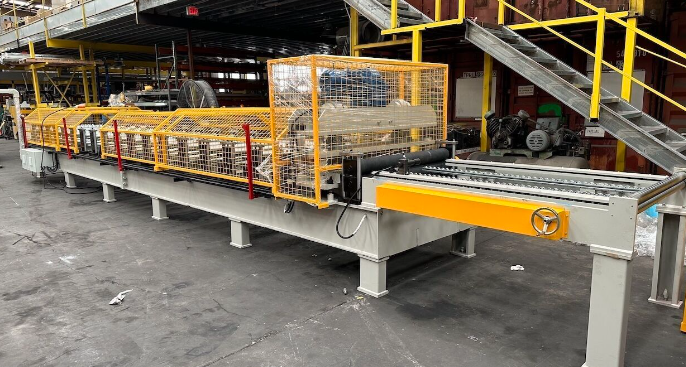
Posted on Thursday, September 19, 2024
An AG panel roll forming machine is designed to produce agricultural panels, commonly used for roofing and siding in agricultural buildings like barns and warehouses. These machines are capable of forming metal panels with a specific profile that offers durability and strength, suitable for agricultural and industrial applications. AG panels are typically corrugated and offer excellent weather resistance.
AG Roof Panel profile
The AG profile refers to a specific metal panel profile used primarily in agricultural settings for roofing and siding. The AG panel is characterized by a series of ribs or ridges that run vertically, which provides structural strength and allows for water runoff. Here are some key features of the AG profile:
This profile is one of the most common for metal roofing in agricultural and rural buildings because of its ease of installation and cost-effectiveness.
Machine matcher specialise in matching your roll forming machine requirements with the perfect new or pre owned machine.
We partner with, and represent some of the finest roll forming manufacturers in the market. For more information and a free machine quote please contact us today or view all machines.

Most Popular Roll Forming Machines in the United Kingdom
Posted on Thursday, December 11, 2025
This blog breaks down the five most in-demand roll forming machines in the UK

Can I Finance a Roll Forming Machine?
Posted on Thursday, December 11, 2025
Financing a roll forming machine is easier than most buyers think. Here’s how leases, loans, and payment plans make production affordable.

Roll Forming Machines for Sale in the UK: What Buyers Need to Know Before Purchasing
Posted on Thursday, December 11, 2025
This complete guide explains everything UK buyers must know before purchasing, including machine types, voltage requirements, CE/UKCA compliance

Roll Forming Machines for Sale in the USA: What Buyers Need to Know Before Purchasing
Posted on Wednesday, December 10, 2025
This guide explains everything U.S. buyers need to know before purchasing a roll forming machine, including machine types, pricing, voltage
Copyright 2026 © Machine Matcher.